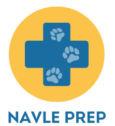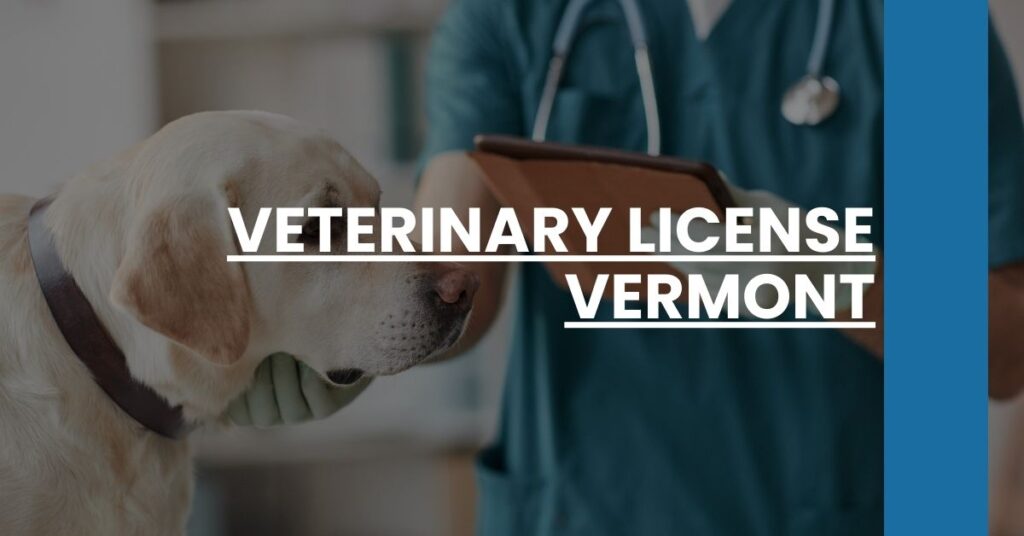Looking for schools in a specific city? Check out our lists of Veterinarian Schools in Burlington.
Obtaining your Veterinary License in Vermont can seem like a daunting process, but you’re not alone in feeling this way.
Those intricate state regulations and examination requirements tend to overwhelm even the most organized individuals. That’s precisely why we’ve put together a guide to streamline this journey for you.
Here’s what you’ll find:
- Essential steps to meet Veterinary License Vermont requirements
- Accredited schools and programs to kickstart your career
- Detailed instructions on the NAVLE and state application process
- Understanding Veterinary Licensing Requirements in Vermont
- Completing Veterinary Education: Accredited Schools and Programs
- Applying for the North American Veterinary Licensing Examination (NAVLE)
- Submitting Your Veterinary License Application in Vermont
- Understanding the Fees and Costs Associated with Licensing
- Continuing Education Requirements for Vermont Veterinarians
- Common Challenges and How to Overcome Them
- Resources and Support for Aspiring Veterinarians
- Looking for Veterinarian Information On States Bordering Vermont?
- Conclusion: Ready to Start Your Veterinary Career in Vermont?
Understanding Veterinary Licensing Requirements in Vermont
Becoming a licensed veterinarian in Vermont involves fulfilling several key requirements. The state has set specific criteria to ensure only qualified professionals practice. Here’s what you need to know:
Educational Prerequisites
First, you must graduate from an accredited veterinary school. The American Veterinary Medical Association (AVMA) or the Canadian Veterinary Medical Association (CVMA) accredit these programs. If you graduated from an unaccredited foreign program, you must obtain an Educational Commission for Foreign Veterinary Graduates (ECFVG) certificate.
Examination Requirements
Passing the North American Veterinary Licensing Examination (NAVLE) is a core requirement. The NAVLE assesses your competency and readiness to practice.
Application Procedure
Once you meet these educational and examination requirements, proceed to submit your application. You’ll apply online through the Vermont Office of Professional Regulation (OPR). Ensure all required documentation is ready, as incomplete applications can cause delays.
Special Conditions
- Foreign Graduates: Verify your credentials in compliance with Rule 4-2.
- Licensed in Another Jurisdiction: You may bypass additional state examinations under Rule 4-3.
- Legal Compliance: Understand and adhere to all state and federal veterinary laws as outlined in Rule 4-4. Ignorance is not a valid defense for non-compliance.
Completing Veterinary Education: Accredited Schools and Programs
Choosing the right veterinary school significantly affects your career trajectory. Vermont recognizes graduates from AVMA-accredited schools, ensuring you meet the eligibility criteria for licensing.
Notable Accredited Veterinary Schools
Consider these accredited institutions for your veterinary education:
- Cornell University in Ithaca, NY
- University of California, Davis in Davis, CA
- Texas A&M University in College Station, TX
These schools are renowned for their rigorous programs and strong emphasis on both theory and practical skills.
Importance of Accredited Programs
Accreditation matters. Only candidates from AVMA or CVMA-accredited schools, or those with an ECFVG certificate, can sit for the NAVLE. Accreditation ensures:
- High-Quality Education: Accredited schools must meet stringent standards.
- NAVLE Eligibility: Graduates are automatically eligible to take the NAVLE.
- Global Recognition: Accredited degrees are respected worldwide.
For more information, visit the Veterinary schools list and explore Best veterinary schools.
Applying for the North American Veterinary Licensing Examination (NAVLE)
Passing the NAVLE is a pivotal step in your licensing journey. The exam tests your knowledge and skills crucial for veterinary practice.
Registration Process
You’ll register for the NAVLE through ICVA at www.icva.net/navle. Starting May 1st, 2024, applications are exclusively online. Make sure you meet the following prerequisites:
- Educational Requirements: Graduate from an accredited veterinary school or hold an ECFVG certificate.
- Eligibility Verification: Confirm that your credentials and eligibility criteria are in order.
Examination Timeline
Mark these critical deadlines on your calendar:
- Spring 2024 Application Deadline: February 1, 2024.
- Testing Windows: Additional deadlines will be announced for other testing windows throughout the year.
Important Tips
- You are permitted five attempts to pass the NAVLE. An appeal is required for any further attempts.
- Ensure your exam scores are submitted to the Vermont state board promptly.
For more resources, check out NAVLE practice test.
Submitting Your Veterinary License Application in Vermont
Once you’ve successfully cleared the NAVLE, it’s time to submit your license application.
Application Submission
Complete and submit your application online via the Vermont OPR website. The process includes:
- Completing the Online Form: Provide your personal details, educational background, and exam scores.
- Uploading Documentation: Ensure you have all the necessary documents, including proof of graduation, NAVLE scores, and any additional certifications.
Additional Documentation
- Foreign Graduates: Submit verification of your ECFVG certification.
- Licensed Practitioners from Other States: Include evidence of your current licensure to bypass additional exams.
Key Points for a Smooth Application Process
- Be Thorough: Incomplete applications will not be processed. Double-check all information before submission.
- Timely Submission: Early application can expedite your licensure.
- Keep Records: Maintain copies of all submitted documents for your records.
By following these guidelines, you can navigate the application process efficiently, ensuring your veterinary career in Vermont begins without unnecessary delays.
We hope this detailed guide helps you on your path to obtaining a Veterinary License in Vermont. For the complete roadmap to your veterinary career, continue following the comprehensive steps outlined in this article.
Understanding the Fees and Costs Associated with Licensing
Navigating the financial commitments associated with obtaining your veterinary license in Vermont is crucial. A clear understanding of these fees will allow you to budget effectively and avoid unexpected expenses.
Initial Application Fee
When you’re ready to submit your application, you’ll need to pay an initial application fee. For Vermont, this is set at $145.00. This fee covers the cost of processing your application and verifications.
Examination Fees
Another significant cost is the NAVLE examination fee. This fee is separate from your application fee and is paid directly to the NBVME (National Board of Veterinary Medical Examiners). For detailed information on the NAVLE exam fee, you can refer to the official NBVME website.
Biennial Renewal Fees
Once you’ve obtained your license, you’ll need to renew it every two years. The biennial renewal fee for veterinarians practicing in Vermont is $200. This fee ensures that your license remains active and that you’re legally recognized to continue practicing.
Additional Costs
There are auxiliary costs you might encounter throughout the licensing process:
- Credential Verification: If you’re a foreign graduate, you may incur fees related to the verification of your ECFVG certification.
- Continuing Education Costs: While we’ll discuss these in detail later, it’s important to note that fulfilling continuing education requirements may also come with associated costs.
Budgeting for these expenses from the beginning can prevent any unexpected financial hurdles down the line.
Continuing Education Requirements for Vermont Veterinarians
Maintaining your veterinary license in Vermont isn’t a one-time effort. Staying updated through continuing education (CE) is not just a legal requirement but also a professional one.
Quantity of Continuing Education
Vermont mandates that licensed veterinarians complete 24 hours of continuing education biennially. This requirement ensures that you remain informed about the latest advancements and best practices in veterinary medicine.
Types of Continuing Education
There are several avenues through which you can fulfill your CE requirements:
- In-Person Workshops and Seminars: These programs offer hands-on learning opportunities and the chance to network with peers.
- Online Courses: Up to 24 hours of your CE can be completed online. This flexibility allows you to continue learning without interrupting your practice. Explore AVMA CE courses for a variety of online learning opportunities.
Approved Institutions and Accreditation
Not all CE courses are created equal. Ensure that your chosen programs are recognized by reputable veterinary organizations such as the AVMA. This guarantees that the learning materials meet high standards and are relevant to your practice.
Renewing Your License
Keeping track of your CE hours is crucial. At the time of license renewal, you’ll need to provide proof of completed CE activities. Organizing your certificates and documents in advance can streamline this process, making it quick and hassle-free.
Common Challenges and How to Overcome Them
Embarking on the journey to obtain your veterinary license in Vermont can come with its share of challenges. However, being aware of these challenges and learning how to overcome them can make the process smoother.
Completing Documentation
One common issue applicants face is the complexity of ensuring all documentation is complete and accurate. Missing documentation can delay your application.
- Solution: Create a checklist of required documents and double-check each item before submission.
Navigating the NAVLE Registration
Registering for the NAVLE can be daunting, especially with strict eligibility requirements.
- Solution: Familiarize yourself with the registration process well before the deadline. Ensure that all prerequisite criteria are clearly understood and met.
Understanding State-Specific Regulations
Each state, including Vermont, has unique rules and regulations governing veterinary practice. Misunderstanding these can lead to compliance issues.
- Solution: Regularly review updates from the Vermont Office of Professional Regulation and stay informed about any changes in legislation.
Balancing Work and Continuing Education
For practicing veterinarians, fulfilling CE requirements while managing a busy schedule can be challenging.
- Solution: Plan your CE activities throughout the two-year period and take advantage of online programs that offer flexibility.
Resources and Support for Aspiring Veterinarians
You’re not alone in this journey. Numerous resources and support systems are available to help you navigate the path to becoming a licensed veterinarian in Vermont.
Professional Organizations
Joining professional organizations such as the American Veterinary Medical Association (AVMA) provides access to numerous resources:
- Networking Opportunities: Connect with seasoned professionals and peers.
- Educational Resources: Access a wealth of information on best practices and new innovations in veterinary medicine.
Educational Resources
Leverage various study materials and resources to prepare for the NAVLE and stay updated with ongoing advancements:
- NAVLE Practice Tests: Utilize NAVLE practice tests to gauge your readiness and identify areas for improvement.
- Veterinary Study Guides: Comprehensive study materials available can provide a foundational understanding of key topics.
Mentorship Programs
Many veterinary schools and professional networks offer mentorship programs. Having a mentor can provide invaluable guidance and support:
- Experience Sharing: Learn from the experiences of established veterinarians.
- Career Advice: Gain insights into career progression and specialization opportunities.
Online Communities
Engaging with online communities, forums, and social media groups dedicated to veterinary medicine can provide additional support:
- Peer Support: Share experiences and get advice from fellow aspiring veterinarians.
- Timely Updates: Stay informed about industry news and updates.
Looking for Veterinarian Information On States Bordering Vermont?
In addition to Vermont, we suggest looking for schools in nearby states.
- Veterinary License New York
- Veterinary License New Hampshire
- Veterinary License Massachusetts
- Veterinary License Connecticut
- Veterinary License Maine
Conclusion: Ready to Start Your Veterinary Career in Vermont?
With a clear understanding of the licensing process, educational requirements, examination details, and associated costs, you’re well on your way to starting your veterinary career in Vermont. Stay informed, prepare diligently, and make use of the available resources and support networks to achieve your goal of becoming a licensed veterinarian.
Embark on this fulfilling journey with confidence, knowing that you’ve equipped yourself with the knowledge and tools necessary for success.

